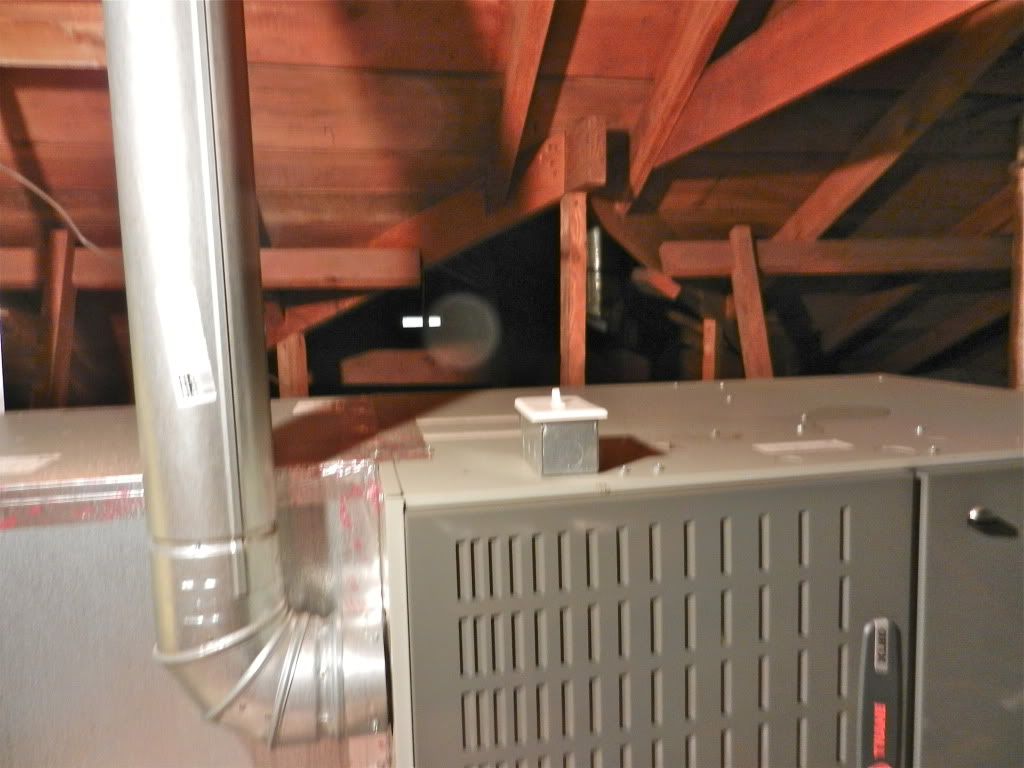NMC enters the bottom of the furnace and then to the outlet box mounted on the top. The snap switch is the disconnect for the furnace.
Would you allow this?

Would you allow this?

Your premier resource for building code knowledge.
This forum remains free to the public thanks to the generous support of our Sawhorse Members and Corporate Sponsors. Their contributions help keep this community thriving and accessible.
Want enhanced access to expert discussions and exclusive features? Learn more about the benefits here.
Ready to upgrade? Log in and upgrade now.

Gosh I hope you are wrong about that. I will be going back for corrections and I will check it out. If you are right, I'll be back to thank you.Msradell said:No, this unit is designed to operate mounted vertically. The flame pattern from the burners will not properly impinge on the heat exchanger when it's mounted in this orientation. Also the flow of fumes to the vent will not flow properly causing a potential for CO to enter the residence.
I will certainly be checking the orientation.Msradell said:I did some further research today in appears that Trane does make some units that can be operated both horizontally and vertically, I wasn't aware of that. You will certainly need to consult the manuals for that unit to verify the installation meets the requirements specified by Trane. As mentioned by peach, the snap switch for the disconnect an acceptable in most jurisdictions.
For many years we wouldn't allow a cord and attachment plug as the disconnect because the units aren't listed with a cord and plug. Now we allow it.steveray said:"location has me wondering."Actual physical position? or the fact that they ran NM through the unit?
440.14 does indeed say the disconnect can be on or even within air conditioning equipment. It goes so far as to say where it can't be located such as a removable panel or over the nameplate. The implication is that it can be field installed.chris kennedy said:440.14 allows the disco to be on the unit. As far as the wiring method passing through, think about RTU's, quite common
Chris,chris kennedy said:440.14 allows the disco to be on the unit. As far as the wiring method passing through, think about RTU's, quite common.
I understand the concept and debunk it. On more than one occasion, I have come across something I didn't like that was not addressed by the code or the manufacturer and I ruled against it. Subsequent discussions with the Chief {insert discipline here} Engineer and or the manufacturer have upheld my decisions. I have written corrections after UL and third party listings and been upheld.peach said:the codes are a minimum.. if the code is silent and the manufacturer is silent, you need to accept... not what we "like" or "want to see"...
